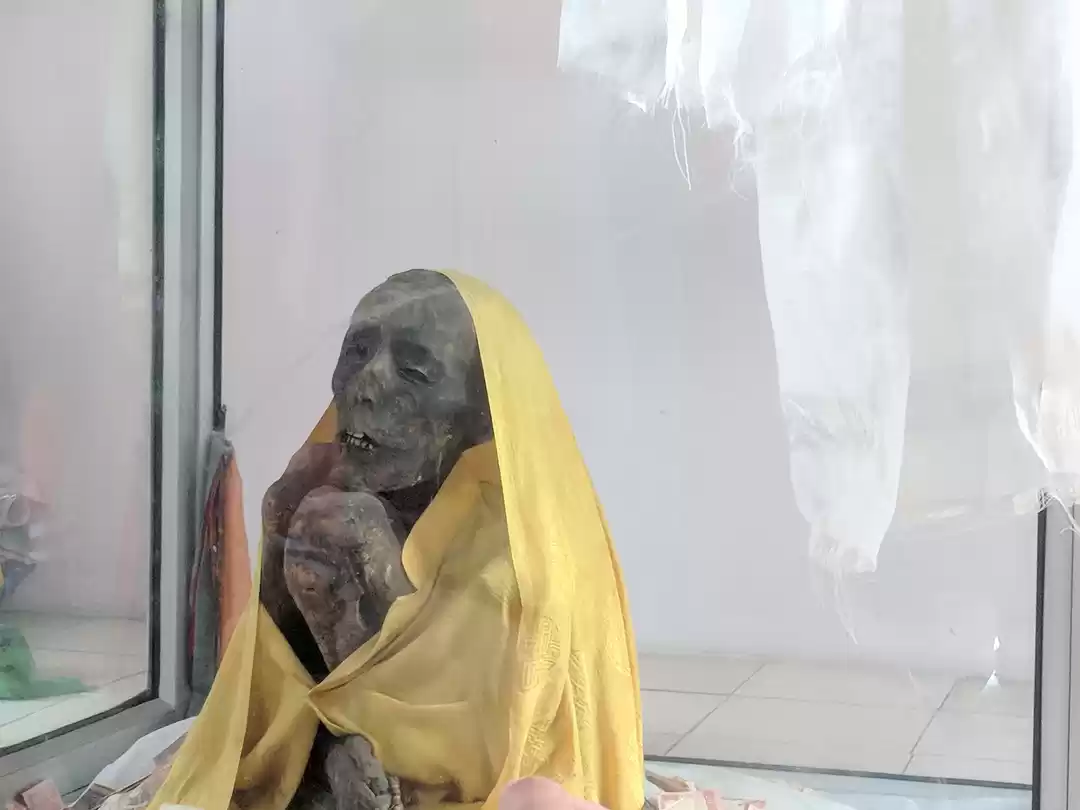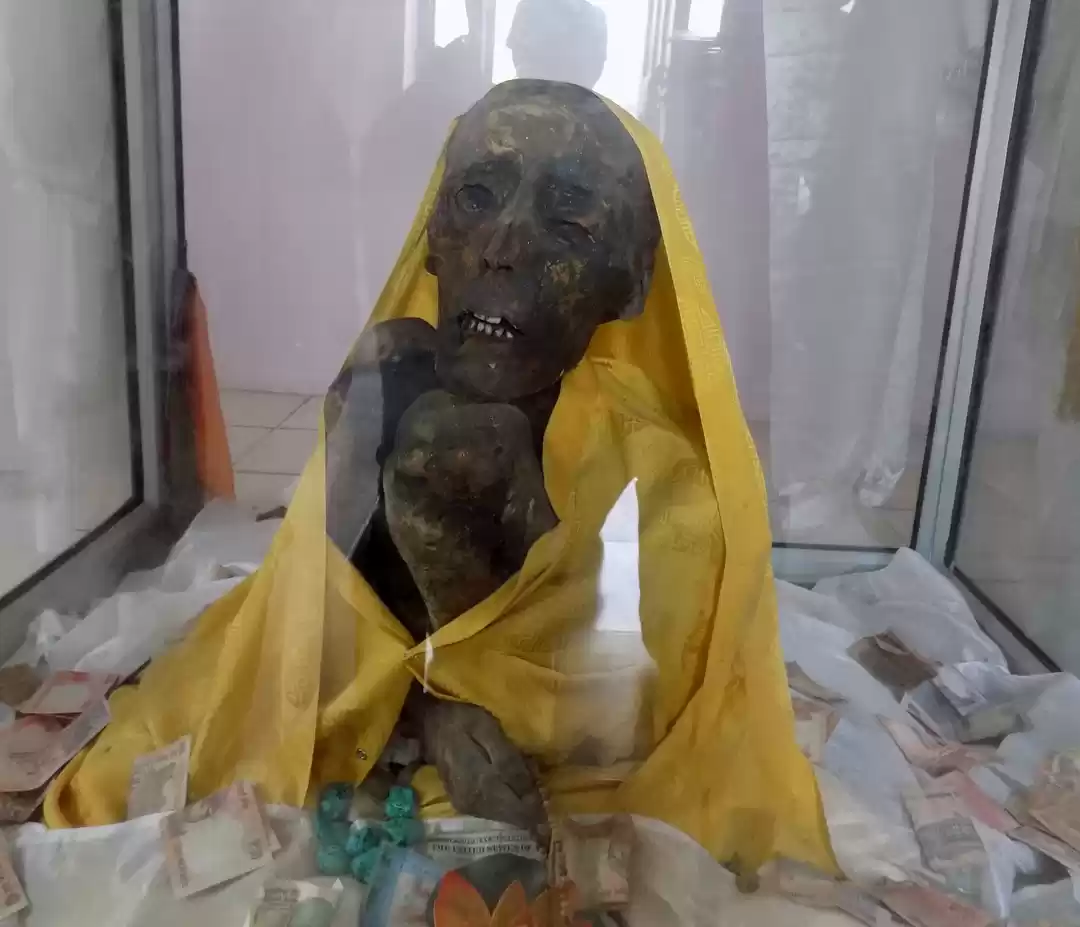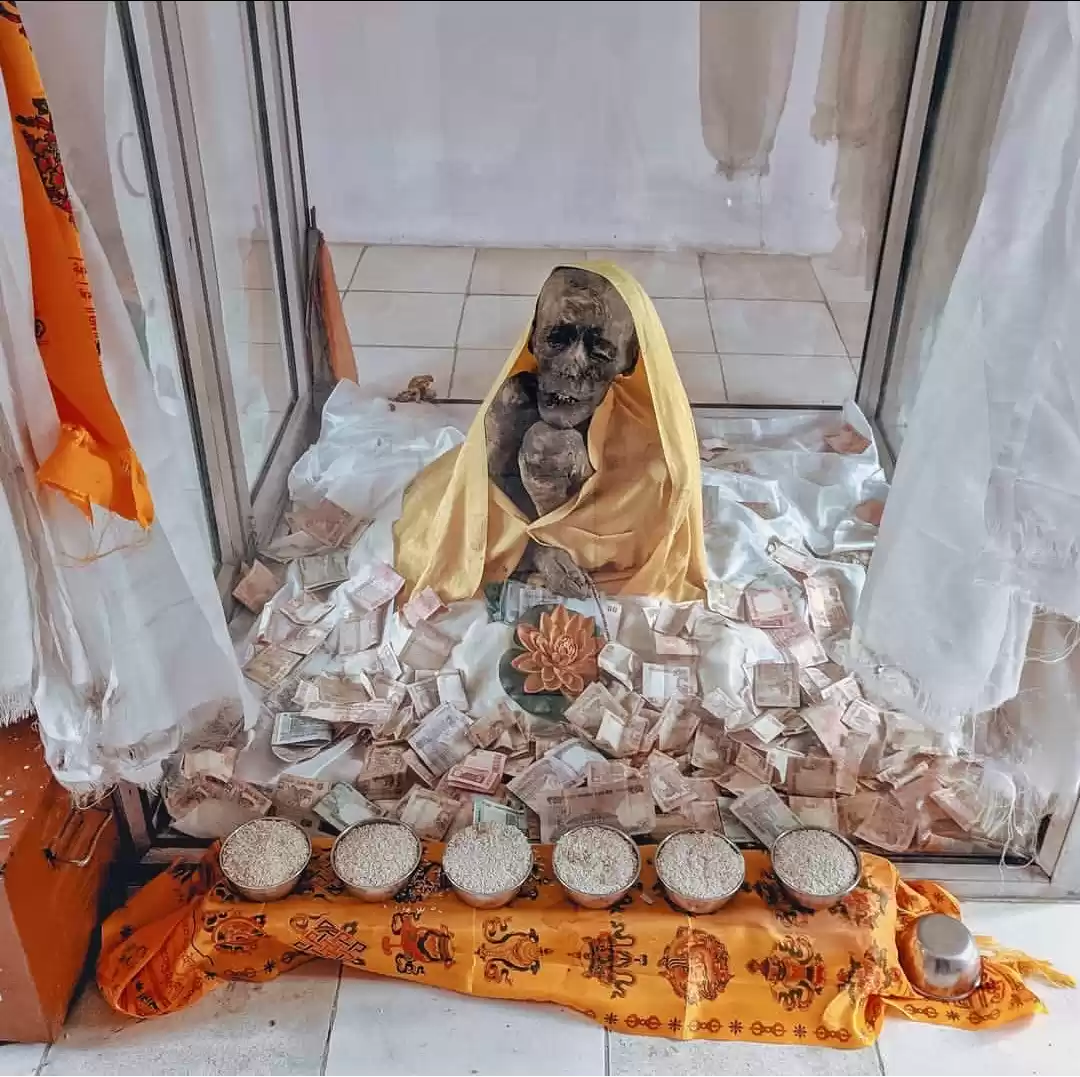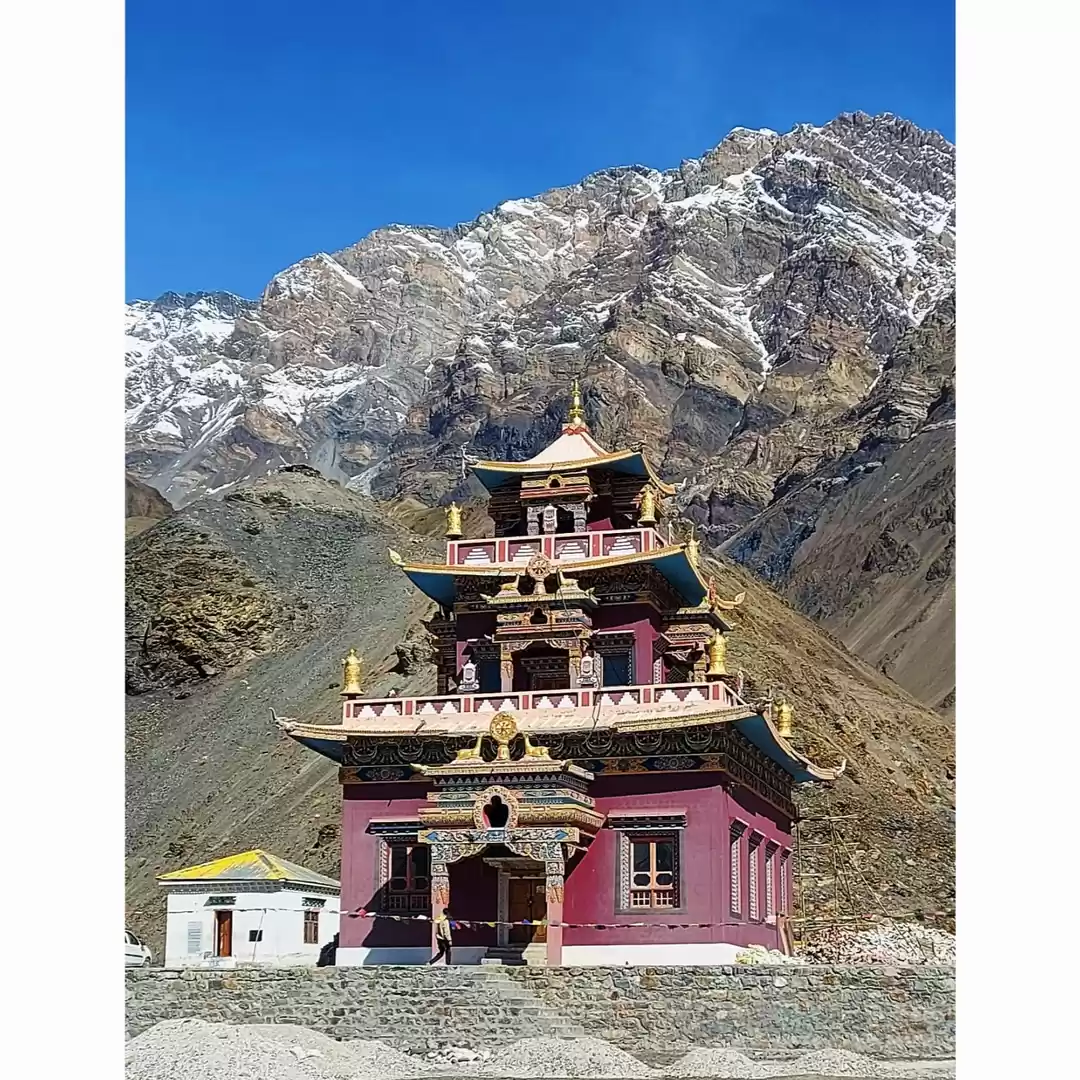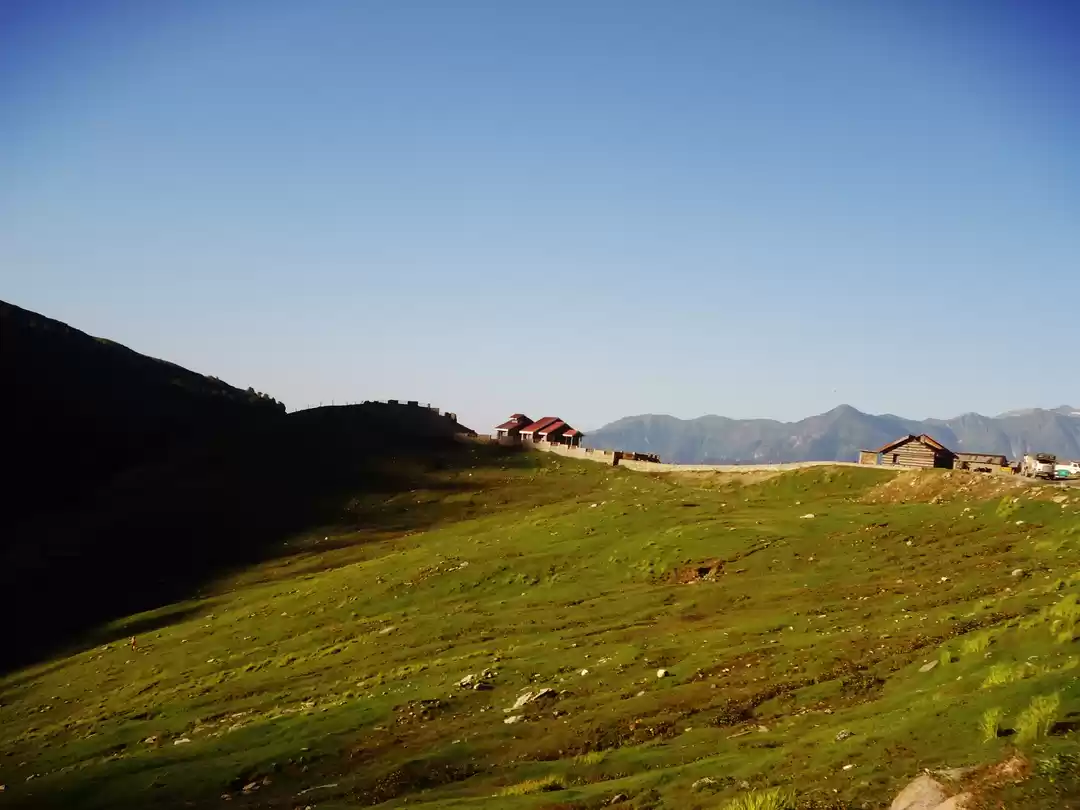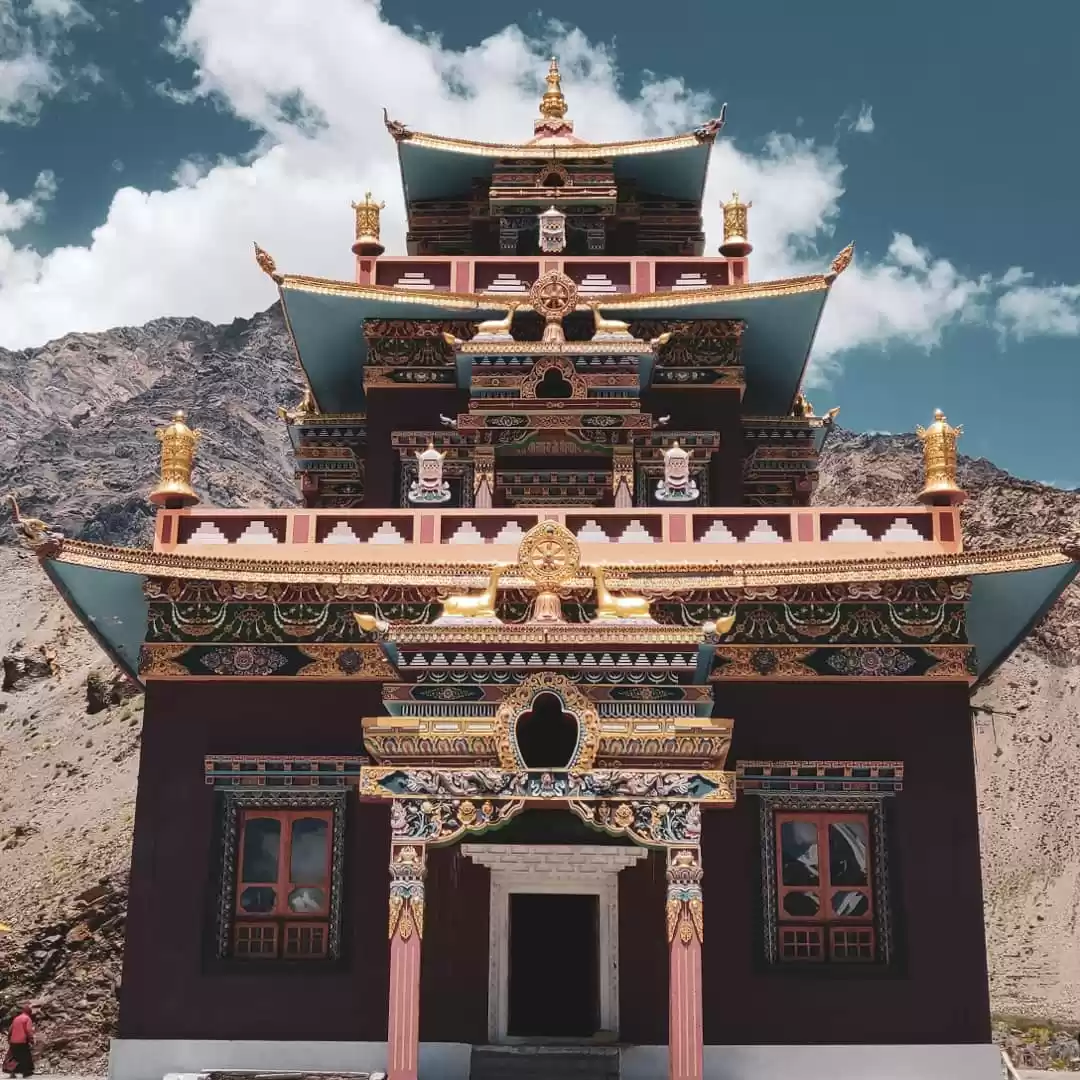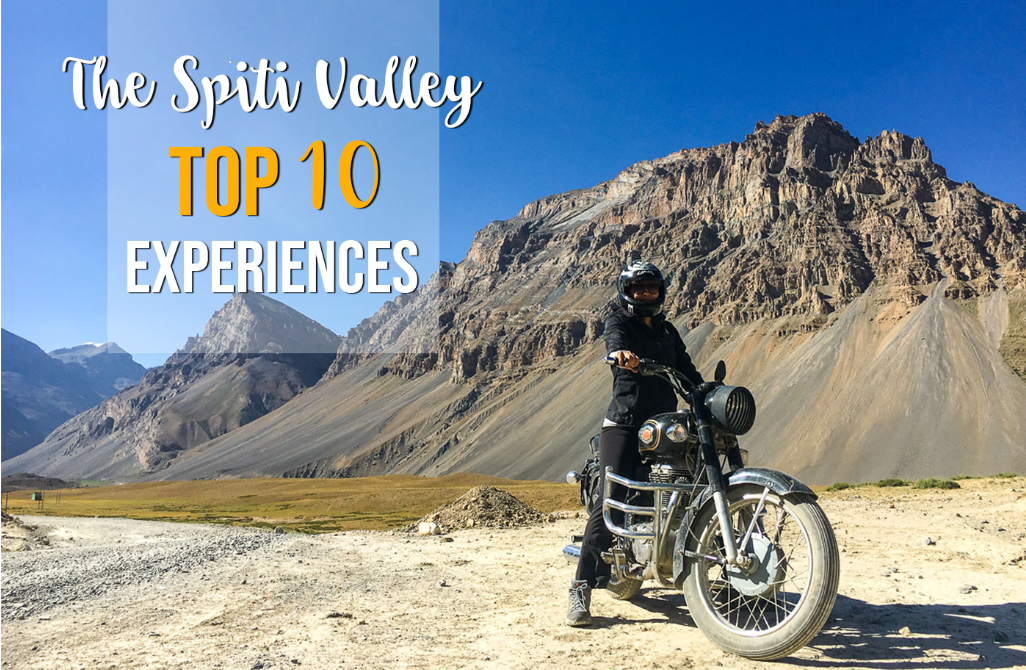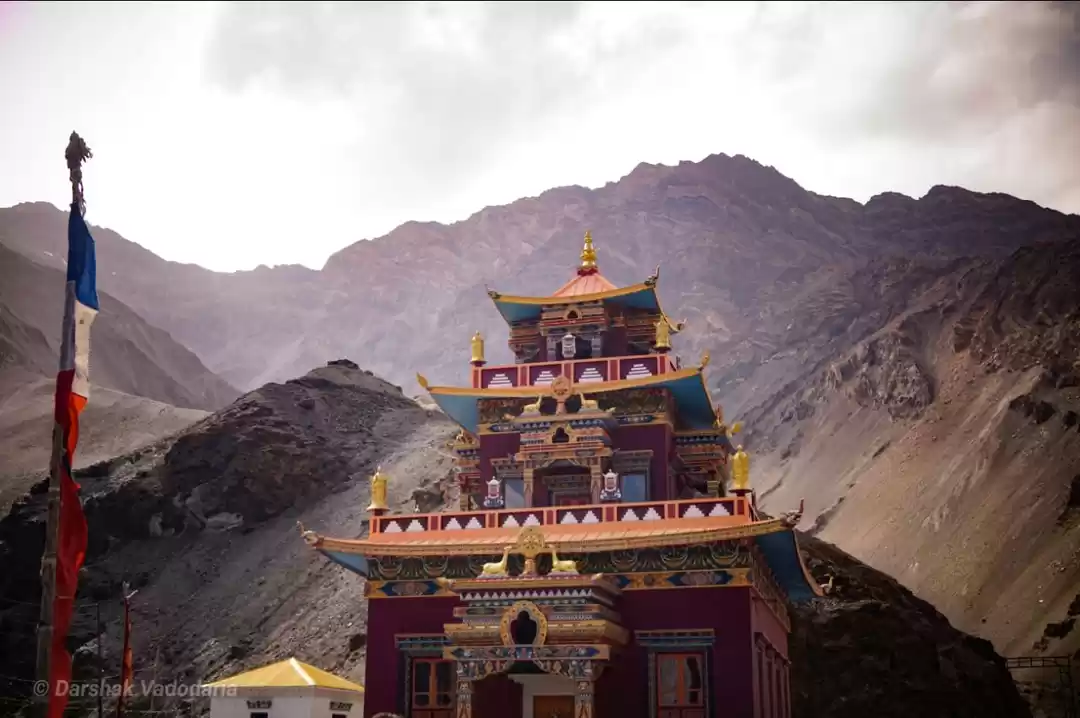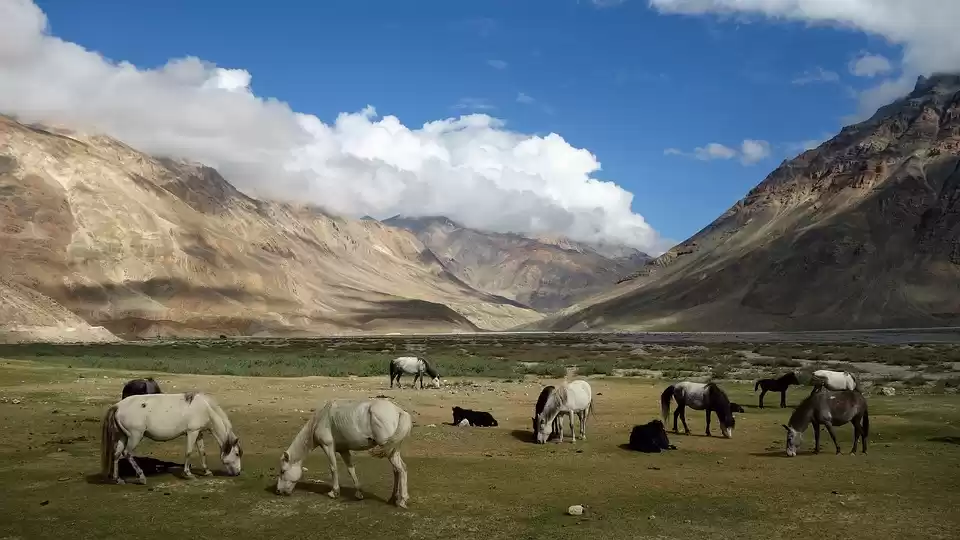Spiti never misses a chance to surprise, right?!
Over 500 years ago in the trans-himalayan village of Gue, a Buddhist monk, Sangha Tenzin started the intriguing process of self mummification, while he was still alive! The cold desert of Spiti has preserved the mummy well ever since the tomb cracked open, owing to a 1975 earthquake in northern India. With the skin, teeth and hair still attached, the mummy is put on a public display in a glass container, very close to where he was excavated.
The Process
Self mummification is a common esoteric practice only in Buddhism, and has been sighted in Japan, India and China. The mummy of Sangha Tenzin is the only mummified lama of India. This process is elaborate and very different from the chemical process of mummification (like the Egyptian mummies), in which the body is embalmed after the person dies.
The monk starts to starve himself slowly with a measured diet. He stops eating rice, barley and potatoes. In order to dry the skin out, the monk regularly runs a candle along his skin. He is seated in a comfortable posture, with his head on a restrainer, and he dies in the same position, meditating. After his death, he is placed in an underground cave for several years to dry out the body completely. Candles are again run along his skin after the drying out process.
There are less than thirty self mummified monks in the entire world, most of which are found on the island of Honshu, Japan.
The Folklore
Sangha Tenzin is said to have renounced his life to save the village and its people from a plague of scorpions. It is said, as the lama went into meditation and then died, a beautiful rainbow went across the sky and all the scorpions disappeared. The village has been free of plague ever since and the villagers worship the mummy for guidance.
On my recent trip to Spiti, I learnt that the locals believe the mummified lama is still meditating, and may wake up any time from his deep slumber. Honestly, I was a little creeped out!
The Route
Gue is situated at an altitude of 10,500 ft. very close to the Indo-China Border, the terrain is treacherous and challenging. Local HRTC buses hardly ply to Gue, so private vehicles or cabs are recommended. Gue lies 30 km from Tabo, so you can visit the monasteries at Dhankar, Tabo and Gue all on a day trip from Kaza.
The village of Gue is untouched by modernization and is sparsely populated, with only a couple of homestays around, and limited food options.
There are many such hidden mysteries and secrets of Spiti, that I have just started to explore. The mummy of Gue is one incredible secret that the clean Himalayan air succeeded to preserve.
Do you know of any such stories?
















